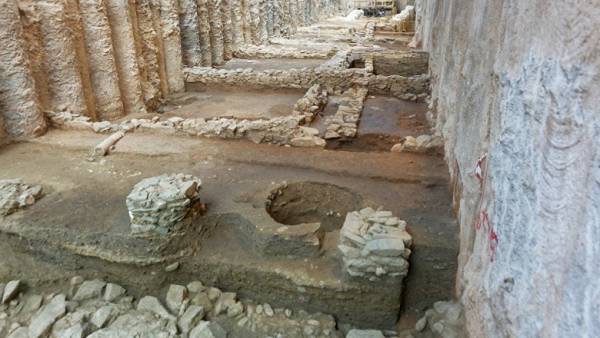Under the Thessaloniki found the ancient city
ATHENS, 24 Feb — RIA Novosti, Gennady Melnik. During the construction of the metro in Thessaloniki managed to extract hundreds of thousands of archaeological finds and discover an ancient town, was told by the archaeologists of the antiquities authority of Thessaloniki, the construction company at a press conference, “And the antiquity, and the metro” in the Northern capital of Greece.

The construction of the metro in Thessaloniki was launched in 2006, but was delayed because of the huge amount of archaeological work and finds. Was made about 300 thousand finds, and the last was a statue of Aphrodite.
Archaeologists discovered the town of Ayr before coming to power in 316 BC the Macedonian king Cassander, a cemetery of Roman times on the outskirts of the Ancient Agora, the Eastern necropolis, an open urban space, where visible organization of the city from the base of the Thessaloniki until the end of the period of late antiquity.

In 2012, during works on the main metro line was discovered part of town the 5th — 4th centuries BC. Were investigated with the area of 3.1 hectares. According to archaeologists, the city was with a strong economy, a developed socio-political structures, and left, he was in the year 315 BC.
Another interesting finding was the cemetery of the Roman period (2nd — 4th century ad), which belonged to a previously unknown settlement.

Excavations at two stations in the historical center of Thessaloniki, at the station “Agia Sofia” and “El”, helped define the principles of urban planning of Thessaloniki from its Foundation to the end of late antiquity. The city was designed in accordance with the standards of the Hellenistic centres of the East. The streets were perpendicular to each other, they stood buildings both residential and for production. The design has been preserved in Roman times. In the 4th century ad marble streets surrounded by columns, and on both sides was built big buildings with luxury mosaic floors, sculptures, said the archaeologists.
Many of the finds relate to the period from the Byzantine Empire until the great fire of 1917 which burnt down most of the “old city”.

Among presented to the public artifacts — a Golden wreath from the burial of the late 4th — early 3rd century BC, many ornaments, clay sculptures, vessels from the Hellenistic period.
According to archaeologists, the findings help to restore the unknown pages of history of the city and of Greece.
 The ancient city 5-4 centuries BC
The ancient city 5-4 centuries BC